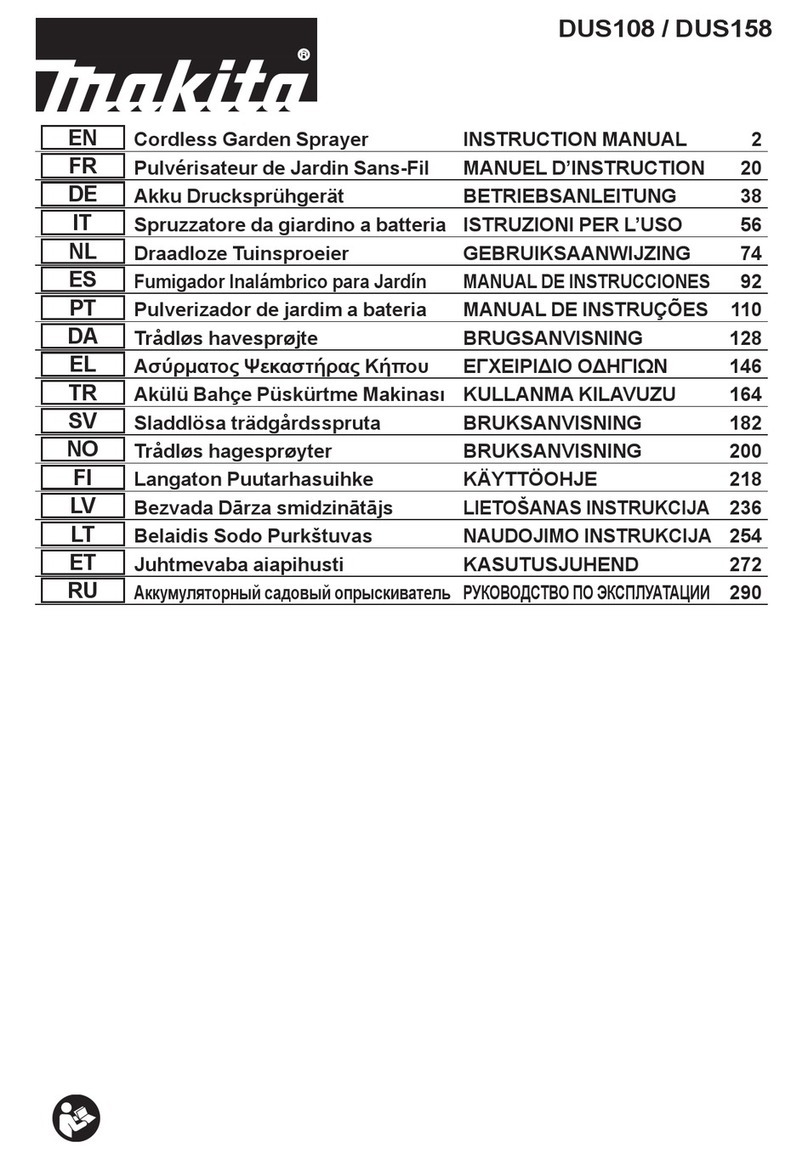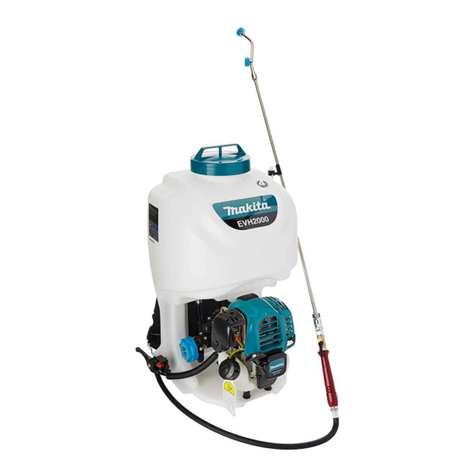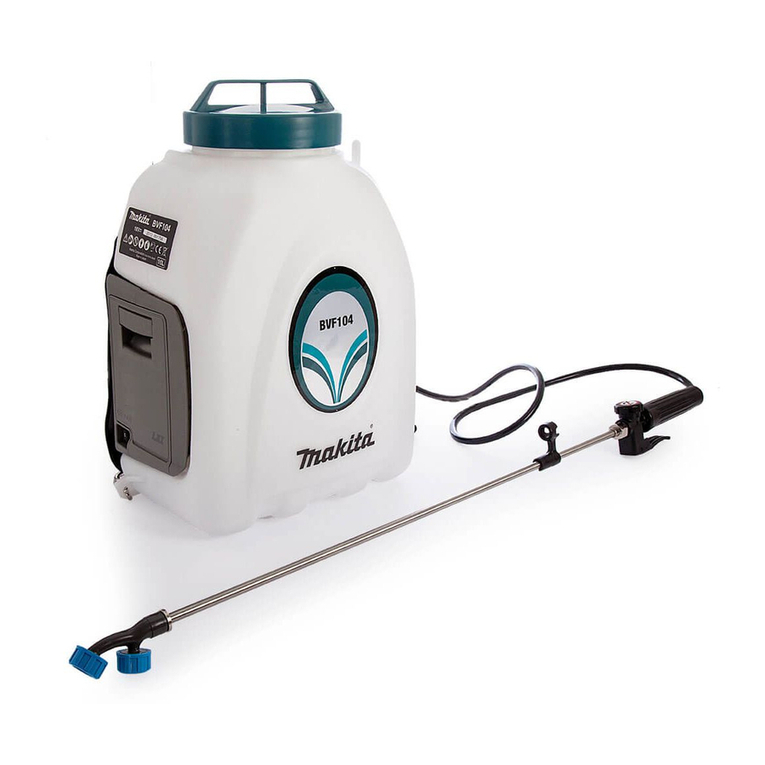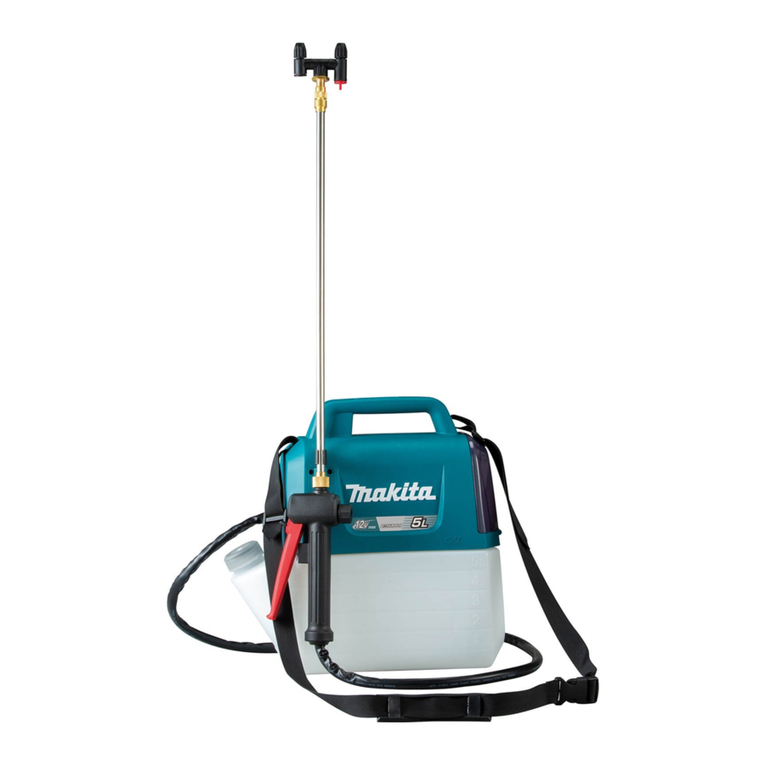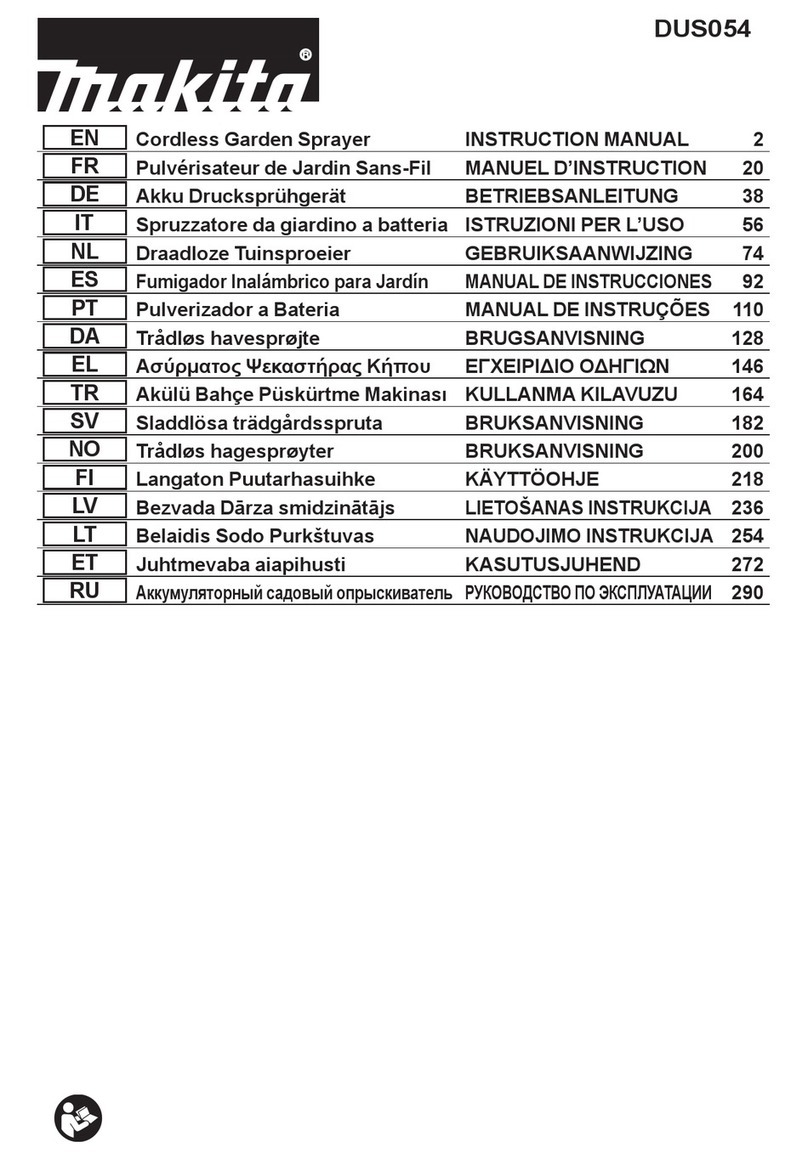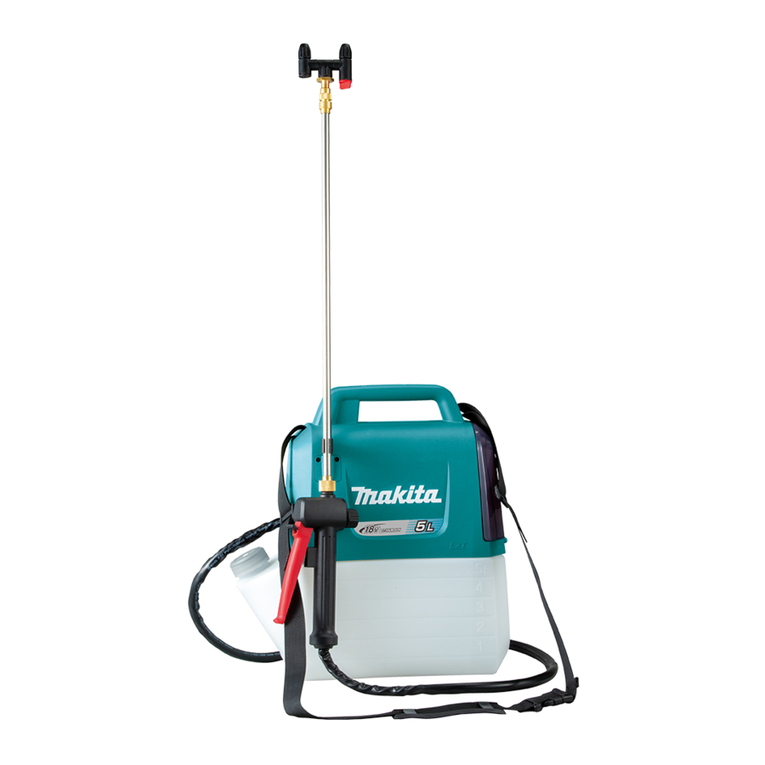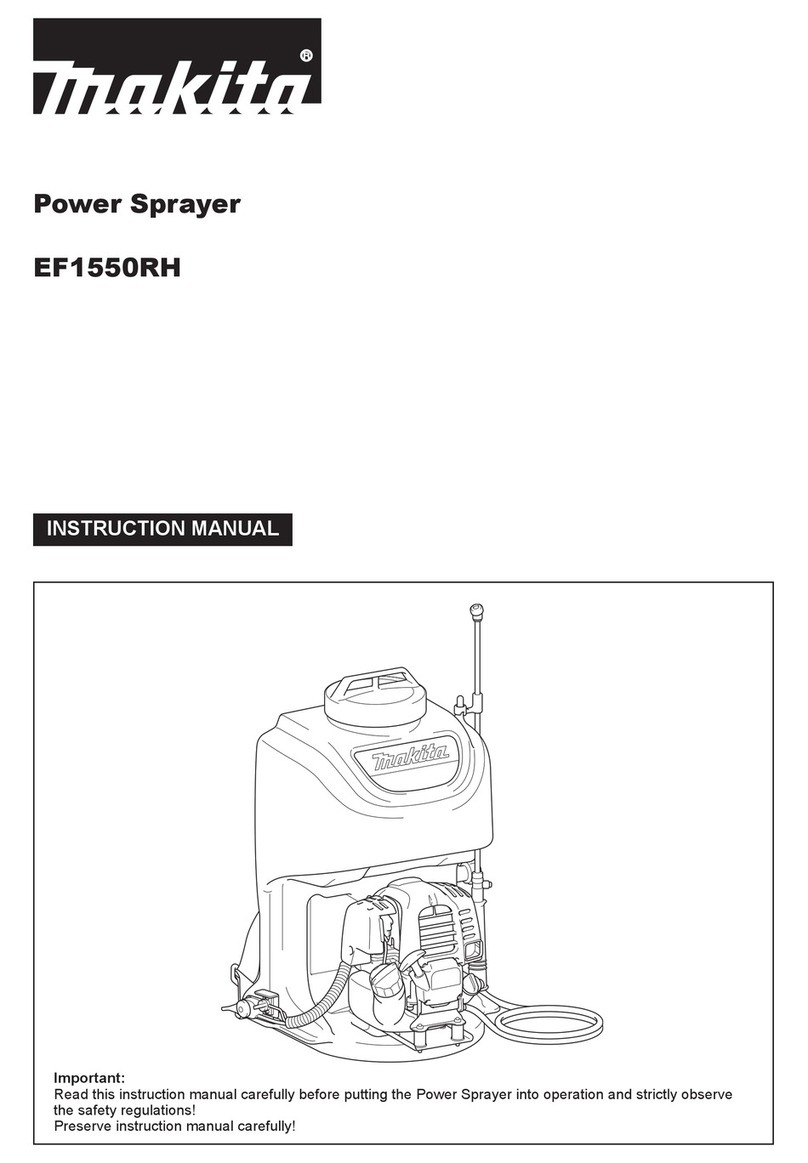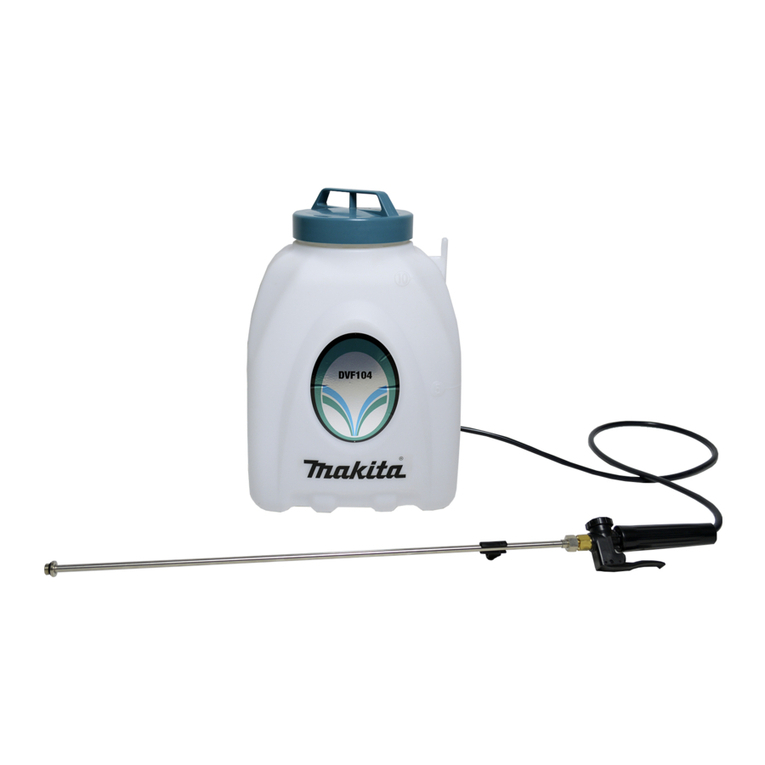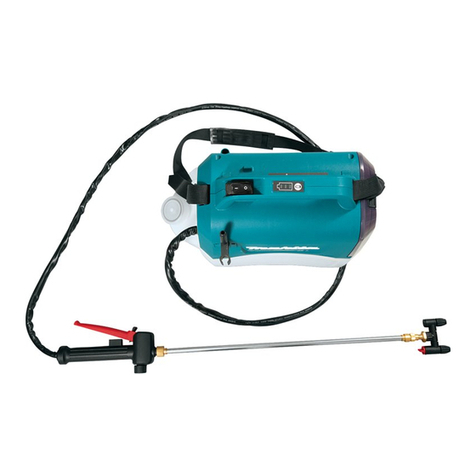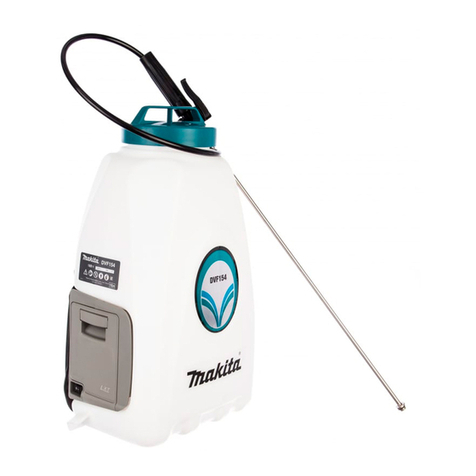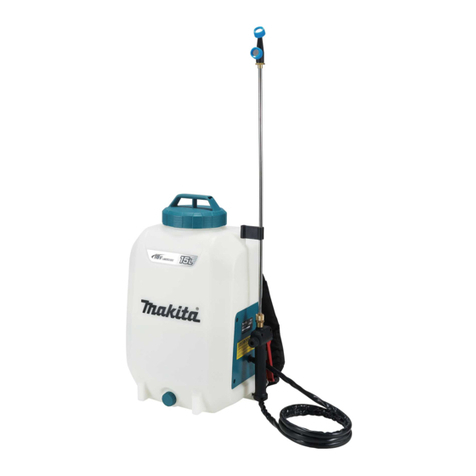3
SAFETY INSTRUCTIONS
General Instructions
– To ensure correct and safe operation, the user must read, understand and
follow this instruction manual to assure familiarity with the handling of the
power sprayer. Users insufciently informed will risk danger to themselves as
well as others due to improper handling.
–It is recommended only to loan the power sprayer to people who have proven
to be experienced with power sprayers.
–Always hand over the instruction manual.
– First-time users should ask the dealer for basic instructions to familiarize
oneself with the handling of a power sprayer.
–Children and young persons aged under 18 years must not be allowed to
operate the power sprayer. Persons over the age of 16 years may however
use the tool for the purpose of being trained only while under the direct
supervision of a qualied trainer.
–Use power sprayer with the utmost care and attention.
– Operate the power sprayer only if you are in good physical condition.
– Perform all work conscientiously and carefully. The user has to accept
responsibility for others.
– Never use the power sprayer while under the inuence of alcohol or drugs.
– Do not use the unit when you are tired.
– Save these instructions for future referral.
Personal protective equipment
– The clothing worn should be functional and appropriate, i. e. It should be tight-
tting but not cause a hindrance. Do not wear jewelry, clothing or long hair
which could be drawn into the air intake.
– In order to avoid head-, eye-, hand- or foot injuries as well as to protect you
hearing the following protective equipment and protective clothing must be
used during operation of the power sprayer.
Pay particular attention to the following regulations
– Please wear clothing that is functional and tight-tting, without restricting
movement when operating the power sprayer. Do not wear clothing or jewelry
that could get tangled with foliage or the machine.
– For adequate protection against head, eye, feet, hand, and hearing injuries,
the following protective equipment and clothing must be used when working
with the power sprayer.
1.Always wear adequate face protection (mask, protective goggles, etc.) to
protect the face, eyes and lungs from dust and chemicals.
2.To avoid hearing damage, wear adequate hearing protection at all times.
3.To protect skin from dust and chemicals, wear work clothes with long
sleeves and long pants at all times.
4.Always wear rubber gloves when operating or servicing the power sprayer.
5.When using the power sprayer, always wear sturdy shoes with non-slip
soles. Special work shoes are available to ensure good footing and protect
against injury.
–Always secure loose clothing, hair, and accessories such as towels etc.
Loose objects may become tangled in moving parts of the machine and
cause serious injury.
Starting up the Power Sprayer
– Please make sure that there are no children or other people within a working
range of 15 meters, also pay attention to any animals in the working vicinity.
Never use the power sprayer in urban areas.
–Before operating, always check that the power sprayer is safe for operation:
Check the security of the throttle lever. The throttle lever should be checked
for smooth and easy action. Check for clean and dry throttle lever and test
the function of the I - O switch.
360˚
15 meters
Waterproof cap
Protective
goggles
Long sleeves
Rubber
gloves
Work shoes
Long pants
Protective
mask
Ear protection
